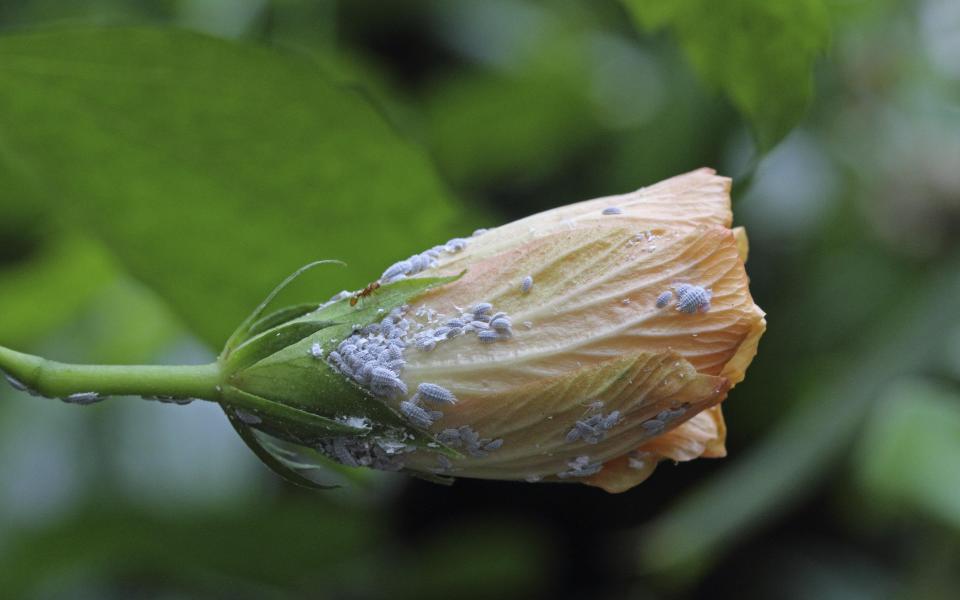New Zealand mealybugs invading Britain and destroying gardens
Many gardeners are plagued by mealybugs in their greenhouses, feasting on the roots of their prized plants.
But now the insects’ even hardier New Zealand relatives have invaded Britain, and they are leaving a trail of destruction in their wake.
Golden root mealybugs have already devastated two gardens in Scotland, with the owners understood to be so upset that they do not want their plight publicised.
Gardeners have little ammunition against the bugs as they are resistant to pesticides and can survive outside all year round, unlike native mealybugs which need warmth.
The pests have also been spotted in northern England with wildlife experts warning they will soon spread south, if they have not done so already.
Now the Royal Horticultural Society (RHS) is urging concerned gardeners to send in samples of their plants so scientists can begin to get a grip on the problem.
Golden root mealybugs are particularly fond of primroses and other ornamental flowers. They leave a golden yellow wax covering the roots after sucking out the sap, while native mealybugs are usually white.
Guy Barter, chief horticulturist at the RHS, said: “The fact that the mealybugs have devastated two gardens indicates that they are able to spread. We are in unknown territory but we would really like to know more about this.”
It’s a very unusual pest and it’s hard to know exactly what they are doing here
Mealybugs, usually between 1mm and 4mm long, are covered in a powdery coating which looks like flour – or ‘meal’. On plants they look like small spots of cotton growing on the underside of leaves and stems.
Infestations are usually first noticed only when the roots of underperforming plants are examined and insects covered in a golden yellow wax found attached to the roots.
The bugs feed by inserting needle-like mouthparts into a plant and sucking out the sap, although it is substance they excrete, called honeydew, which causes the most damage by attracting ants and providing a medium for mould.
Mealybugs move slowly and the females cannot fly, so infestations are most likely to spread from site to site within the UK via infested plants.
Experts recommend inspecting newly-purchased plants extremely carefully before putting them in a greenhouse where the pests could flourish.
While entomologists believe the pests are capable of feeding on a wide variety of plants, they have so far been found mainly on primroses and meconopsis in the north of England and Scotland. They were first recorded in the UK in 2012.
Mr Barter advised gardeners whose plants are mysteriously failing to dig around the roots to check for the golden yellow wax.
Where a mealybug infestation is discovered, he said the plants would have to be disposed of and the soil left fallow for one or two years.
“Even then there is no guarantee that the mealybugs are not surviving in neighbouring plants,” he said.
The New Zealand mealybugs could have entered the UK in imported plants, plant tools or in the earth on people’s shoes, according to the RHS.
“It’s a very unusual pest and it’s hard to know exactly what they are doing here,” said Mr Barter.
Kenneth Cox, a Perthshire-based gardening expert and primrose specialist, said it is only a matter of time before the insects spread across Britain.
Mr Cox believes that the infestation shows the UK is too lax in letting in foreign flora. He said Brexit would give Britain the opportunity to overhaul the rules governing the import of foreign plant matter.
Standard insecticides do not penetrates mealybugs’ waxy outer layer, so New Zealand garden retailers sell specialist products containing the systemic insecticide acetamiprid to combat infestations.
A mixture of washing up liquid and water delivered in a jet powerful enough to knock the insects off their plants is a low-tech alternative, and ladybirds released into a greenhouse will predate a mealybug population.

 Yahoo News
Yahoo News 

